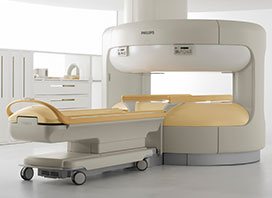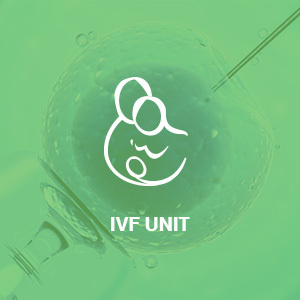STEM CELLS

REA Maternity Hospital in an exclusive cooperation with Biogenea Pharmaceuticals Ltd, the first pharmaceutical biotechnology and cellular therapy company in Southeastern Europe, have created an innovative service for the collection, isolation, processing and cryopreservation of hematopoietic stem cells from umbilical cord blood and mesenchymal stem cells from umbilical cord. Thanks to this strong cooperation, modern families are now able to preserve such valuable biological material that may be proven really useful in the future.
1. What are the umbilical cord stem cells?
They are progenitor cells that retain the ability to differentiate into various cell types.
There are two main categories of stem cells isolated from the umbilical cord:
I. Hematopoietic stem cells of umbilical cord blood, which may be used as a hematopoietic transplant instead of bone marrow for the reconstitution of the hematopoietic system.
II. Mesenchymal stem cells of umbilical cord perivascular tissue (Wharton’s jelly), which can be used for the regeneration, restoration or repair of damaged solid tissues and organs.
2. Collection process for stem cells of umbilical cord blood
A sample of umbilical cord blood (UCB) is collected from the umbilical vein. It is collected right after the delivery of the baby, as soon as the baby is detached from the umbilical cord. Blood collection does not affect the baby delivery process. The obstetrician performs the collection and the same method applies both for the natural birth and the caesarean section. The UCB is transported into special packaging, protected from radiation and mechanical damages.
Its temperature is kept steady using special thermostatic equipment until its procession to the laboratory.
3. Aseptic process and isolation of UCB hematopoietic stem cells
The sample is assigned a unique code. Its process begins as soon as the sample is delivered to the laboratory. The buffy coat containing the stem cells is isolated. Laboratory facilities consist of "clean rooms" with graded controlled levels of pressure. The most important stages of the procedure are performed in cleanrooms (class A/B), according to EU directives.
4. Storage of mesenchymal stem cells (MSC) from Wharton's Jelly
Wharton’s jelly is a gelatinous substance surrounding the three blood vessels of the umbilical cord. It is an important source of mesenchymal stem cells. Storing MSC from 6-7 cm of Wharton’s jelly of the umbilical cord is considered enough. The cells of the jelly preserve all the properties of the stem cells.
Mesenchymal stem cells may proliferate, cultivate and differentiate as follows:
- Osteoblasts (for bone fractures, osteoporosis, etc.)
- Chondrocytes (for cartilage damage and osteoarthritis)
- Adipocytes (they form adipose tissue and can help in cardiovascular conditions, like myocardial infraction and heart failure)
- Neural cells: neurons and neuroglia (future supporting treatment for nervous system conditions, like spinal cord injuries, Parkinson's disease, Alzheimer's disease, strokes)
- Some recent studies also show that these cells can differentiate into hepatocytes and pancreatic cells for a future use in conditions like cirrhosis, hepatic impairment and Type 1 diabetes.
5. Quality Control of stem cells
Quality control: Blood tests are performed by an automatic blood analyzer. Flow cytometry for the absolute count of the stem cells.
- Bacterial screening: Liquid culture in aerobic and anaerobic conditions in the automatic system BacΤ/ALERT by BioMérieux. In case of a positive sample, an identification of the isolated bacterial strain is performed followed by an antibiogram.
- Serological screening: It is performed in an automatic immunological analyzer
6. Control process for stem cell viability
A tiny sample is separately cryopreserved and thawed in order to check stem cells viability. This defrosting process does not affect in any way the main sample. With such process, it is certified that stem cell viability is not affected during cryopreservation. Viability control is performed using the automatic system Glomax by Promega.
7. In vitro stem cell proliferation
Biogena pharmaceuticals ΤΜ (that REA Hospital cooperates with) in an exclusive Panhellenic cooperation with Regenetech uses patent technologies for stem cell proliferation and autologous therapy, originating from NASA research laboratories. Therefore, the isolated amount of stem cells may be proliferated in case it is necessary for a successful application in treatment.
8. Long-term storage and availability of stem cells
The isolated amount of stem cells is stored in approximately -196°C. Any biological activity is paused under such conditions, together with the stem cells metabolic level. Temperature and nitrogen levels are continuously controlled by a specific monitoring system. Biogenea PharmaceuticalsTM ensures immediate and certified availability of stem cells in case they are needed.
9. Diseases that can be treated with stem cell usage
Since 1988 umbilical cord blood is being used for the treatment of serious diseases. However, with research on stem cells being rapid, the number of diseases and conditions that may be treated using stem cells constantly increases.
10. Current application of hematopoietic stem cells
Leukemias, lymphomas and other malignancies of hematopoietic system
11. Current application of mesenchymal stem cells
- Skin regeneration
- Cartilage regeneration
- Joint regeneration
- Neural tissue regeneration
- Treatment of solid tissue malignancies
- Ιmmune response of the organism.
12. Clinical application of stem cells under research
- Brain injuries
- Central paralysis
- Type 1 and 2 diabetes mellitus
- Heart diseases


















